AAAA Vs AAA: How Pearl Grading Scales Works?

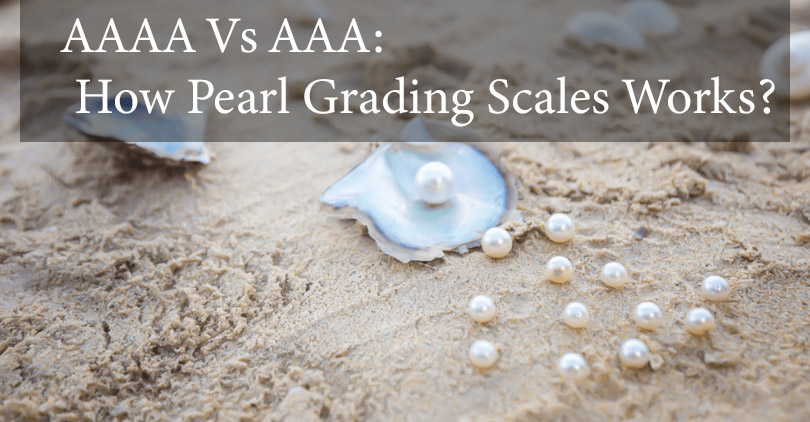
Grading scales cover various factors to evaluate a pearl's quality, lead to different categories, and distinguish top-notch pearls from those with less brilliance.
Complex factors, including shape, size, color, and value, are difficult to compute before buying pearl jewelry. Besides, the grading scale depends on pearl origin and changes with nacre formation or quality assessment.
If you’re confused by various pearl grading scales, scroll through our detailed guide to clear them quickly and pick the best one for you right now.
What’s The Deal On AAAA or AAA Grades?
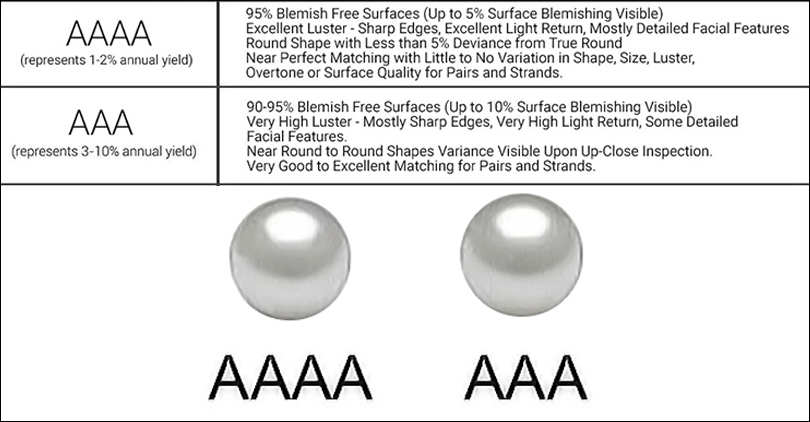
Various grading scales confuse pearl lovers when buying in-store or online, as shapes, sizes, or colors make screening the most challenging part. However, origin scales help to screen top-tier pieces and choose the best pearl for your unique, distinctive jewelry.
Based on Timeless Pearl, a quick breakdown of various grading scales on nacre, luster, and surface leads to concise choosing in the vast market. Even the AAAA grading scale covers only 1-3% of total pearl production, while the AAA can possess up to 5%.
Further, pearl cost varies with grading scales, which help you to get your desired pieces at the best price. Hence, the grading scales set chaos in screening pearls on the origin and give enthusiasts top-tier pieces.
Various AAAA Vs AAA Grading Scales
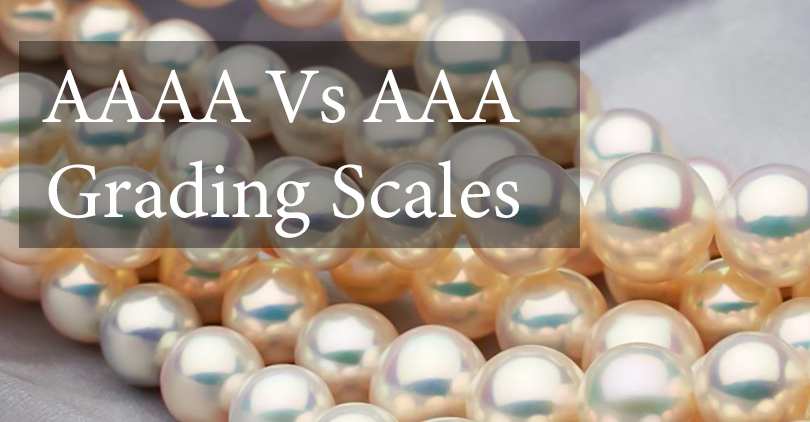
Though pearl grading varies depending on origin, South Sea, Akoya, Tahitian, and Freshwater pearls have an absolute difference in grading scales. Let’s dig into the difference in these grading scales.
South Sea Pearl Grading
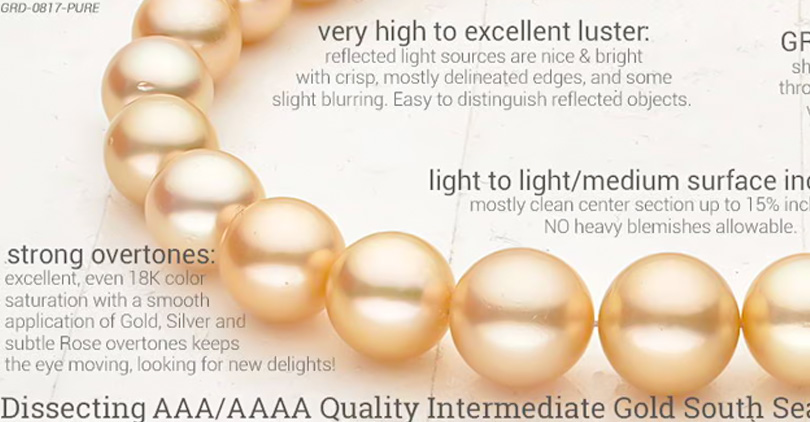
While grading South Sea pearls, only 1-5% of pearls suit the AAAA scale, whereas 5-8% of total annual yield is AAA grade.
In addition, South Sea pearl AAAA grading offers up to 95% blemish-free surface with no deep inclusions. On the contrary, AAA-grade pearl covers an 80-85% blemish-free surface, allowing up to one deep inclusion.
Due to no blurring or edges in the AAAA South Sea, these pearls can offer a very sharp luster and luminous shine. However, the AAA scale of pearls includes some blurring on edges, slightly leading to a satiny reflection.
Akoya Pearl Grading

AAAA grade Akoya pearl only includes a 0-5% blemish rate on the pearl surface with a very high reflection rate, perfect for necklaces, earrings, or pendants. On the other hand, Akoya’s AAA grade offers 5-10% visible blemishes with slight blurring edges.
Pure Pearl state AAAA grade recognizes clean facial features, including a crisp, defined edge, leading to a sharp, mirror-like surface. Inversely, AAA scales contain soft, blurry edges yet offer a clean appearance to naked eye inspection.
Tahitian Pearl Grading
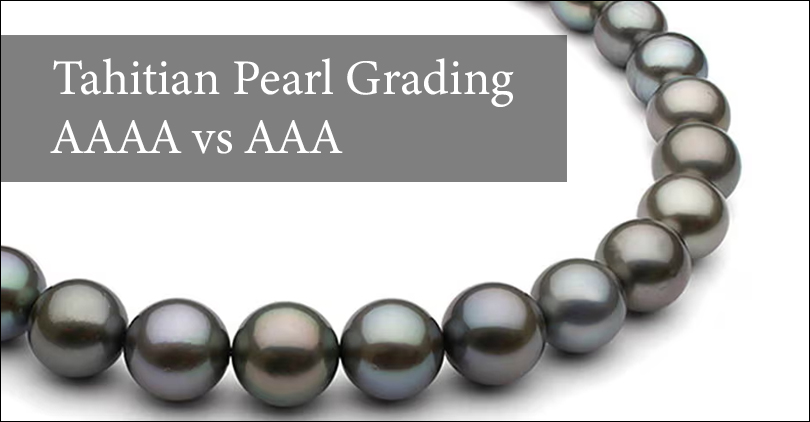
If you're picking a AAAA-grade Tahitian pearl, the 95-99% clean surface quality offers a sharp luster and detailed reflection.
Moreover, the grading scale gemstone is perfect for jewelry as there are no variations in pearl color, overtones, or saturation level. Even the pearl grade covers an intense, vivid tone and exhibits toughness with less than 5% inclusions in the strand.
Conversely, AAA-grade Tahitian pearls show a 90% clean surface with near-round or symmetrical shapes, resulting in slight variations in color or size. Further, 1-2 deep inclusions with soft, blurry edges are allowable on pearl surfaces in the AAA scale.
Freshwater Pearl Grading
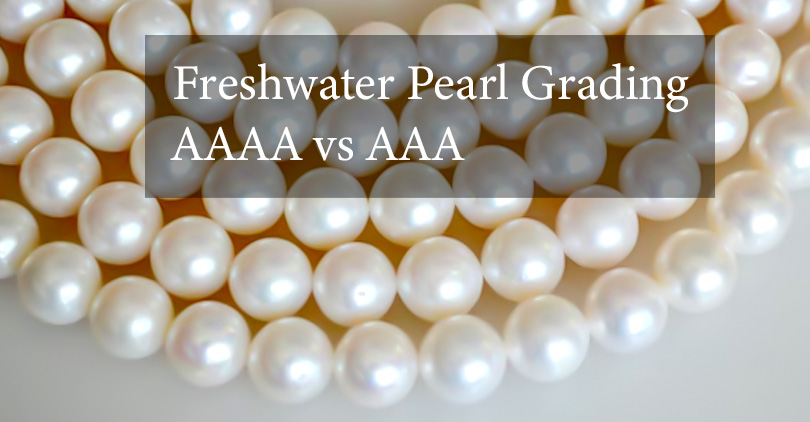
Freshwater AAAA scale pearls offer a sharp, bright luster and round shape with few to no blemishes or spots. Besides, 1-3% of total pearls match the top-tier AAAA scale, increasing the demand for freshwater pearls for earrings, rings, or pendants.
Only 5-10% of blemishes with round to near-round shapes are allowable on the freshwater AAA grading scale. In short, these grading scale pearls offer sharp edges, high luster, and detailed facial features.
Should I Pick AAA or AAAA Grade Pearls?
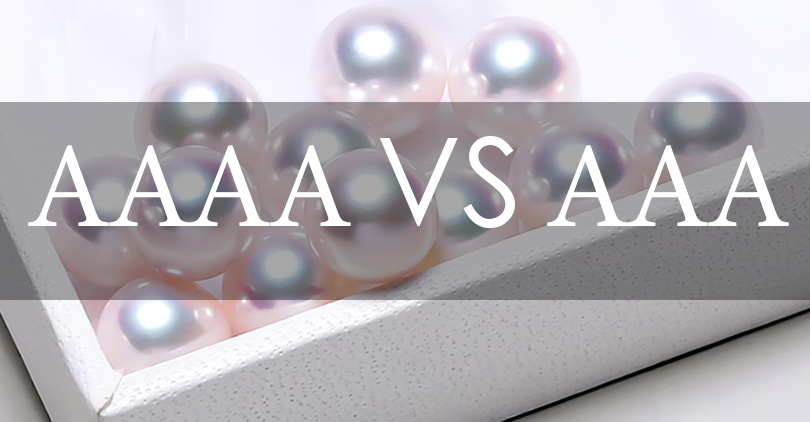
AAAA-grade pearls are better for jewelry enthusiasts as the grading scale offers higher nacre thickness, a clean surface, sharp luster, and luminous shine.
When dealing with nacre thickness, very thick layers of AAAA-grade pearl ensure a luminous luster and a decade of durability. On the other hand, AAA grade gives comparatively thin layers of nacre that lead to a slight satin finish.
According to Love Elements, the surface quality of AAAA pearls is 95-99% clean with no spots, while AAA grade shows a 90-95% clean surface with one or two blemishes.
Even the AAAA pearl shows crisp edges and a vivid overtone, whereas the AAA grade offers soft, blurred edges and lower overtones. With these complex aspects, the AAAA pearl grade is the most desired scale for collectors or enthusiasts.
Warp Up
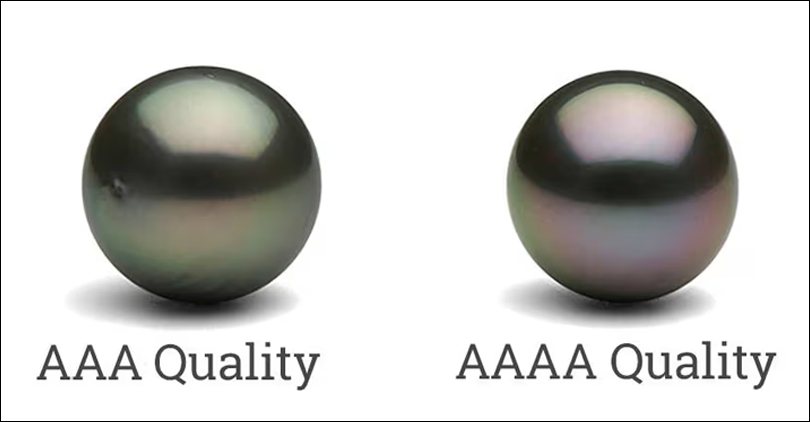
Grading scales evaluate a pearl's quality by covering complex factors to distinguish and categorize different pearls. South Sea AAAA pearl grading offers up to 95% clean surface, while AAA pearl grading covers an 80-85% inclusion-free surface.
Further, the freshwater AAAA grading provides a round shape with no spots, whereas 5-10% of blemishes with near-round shapes are allowable on the AAA scale. So, visit White Victoria to pick the best-graded pearls to elevate any attire.


Leave a Comment